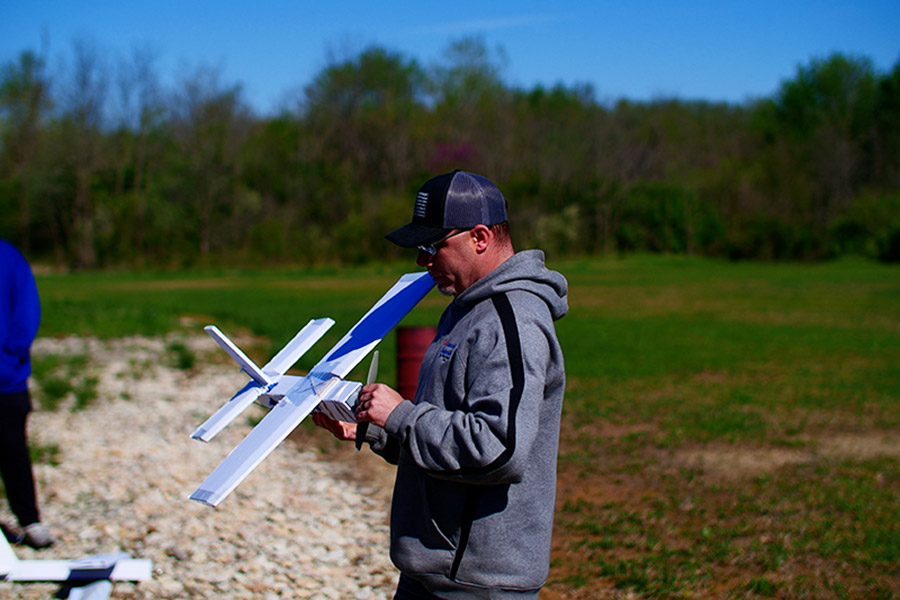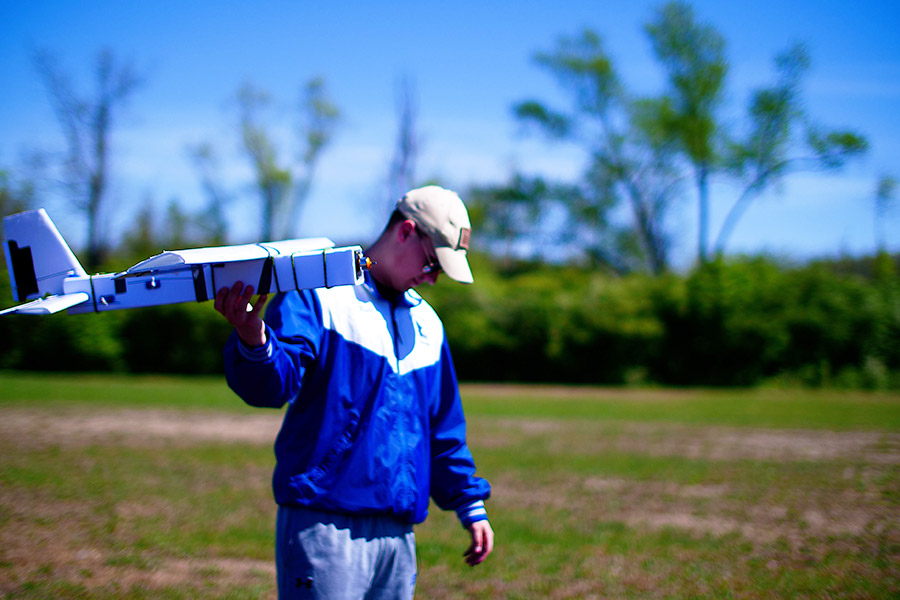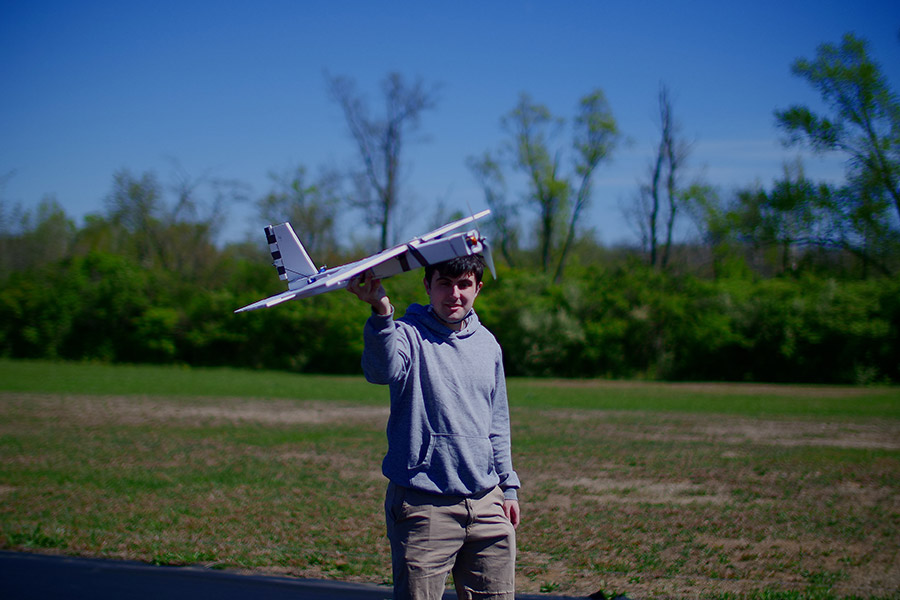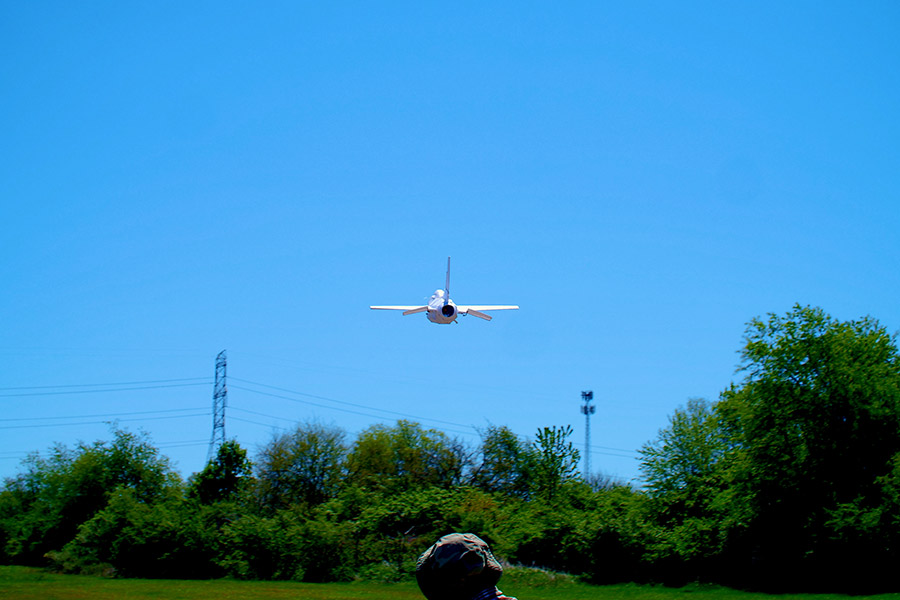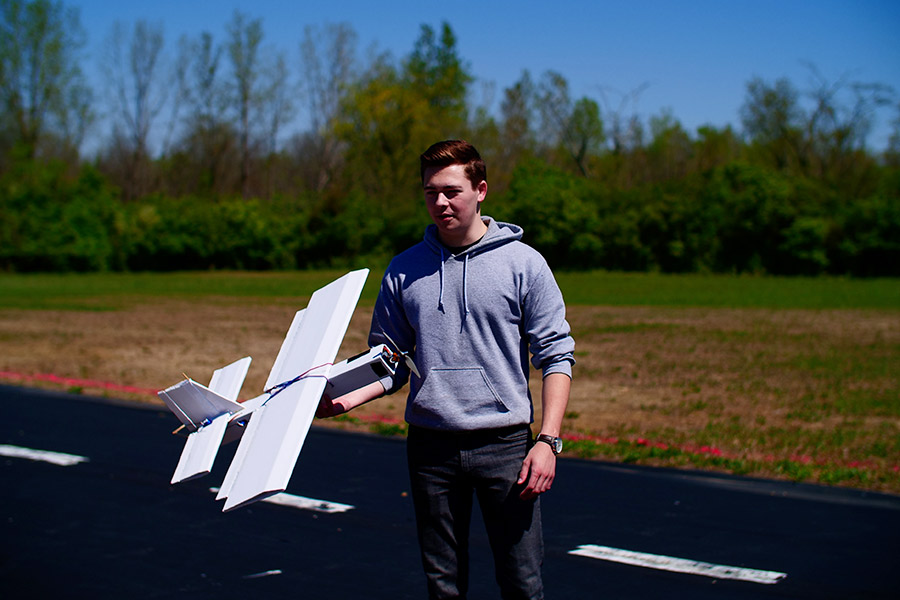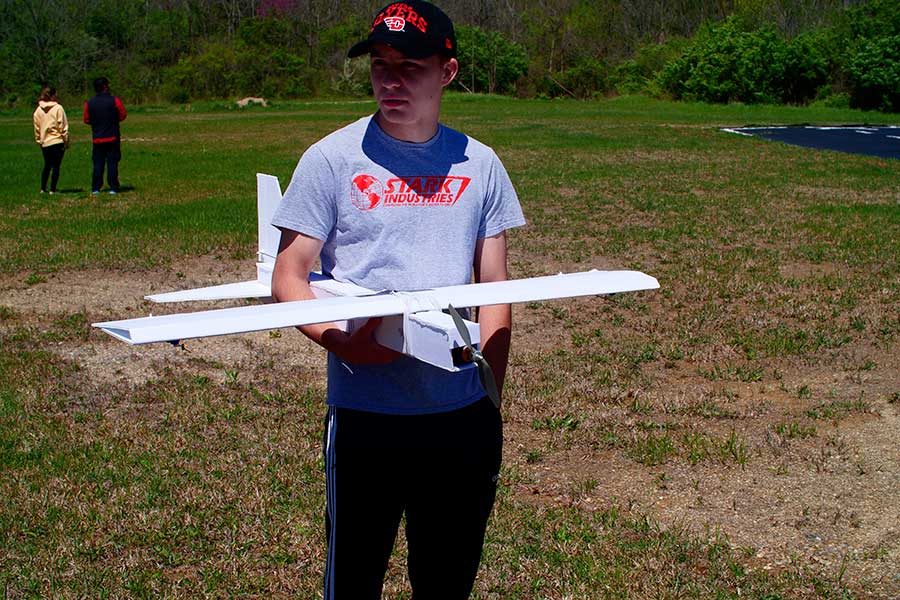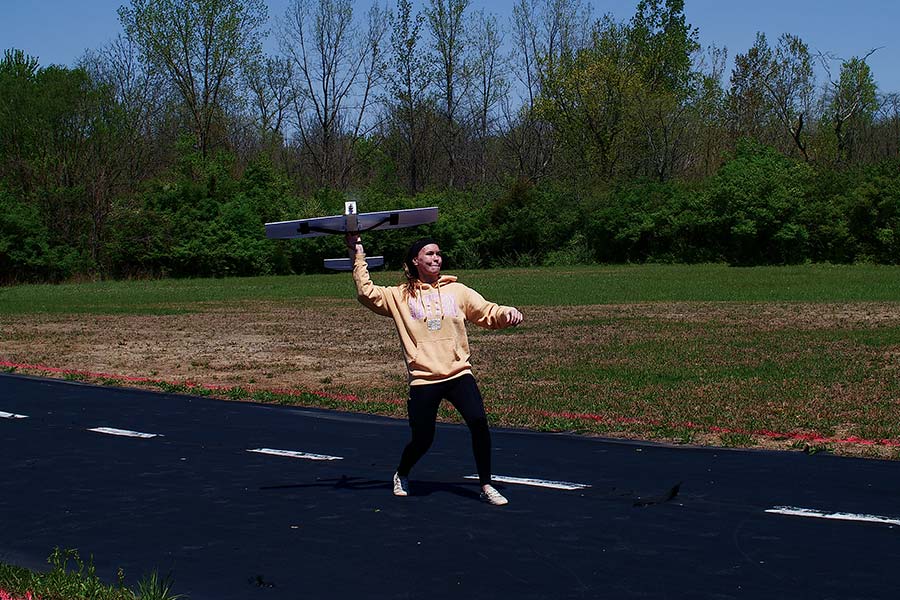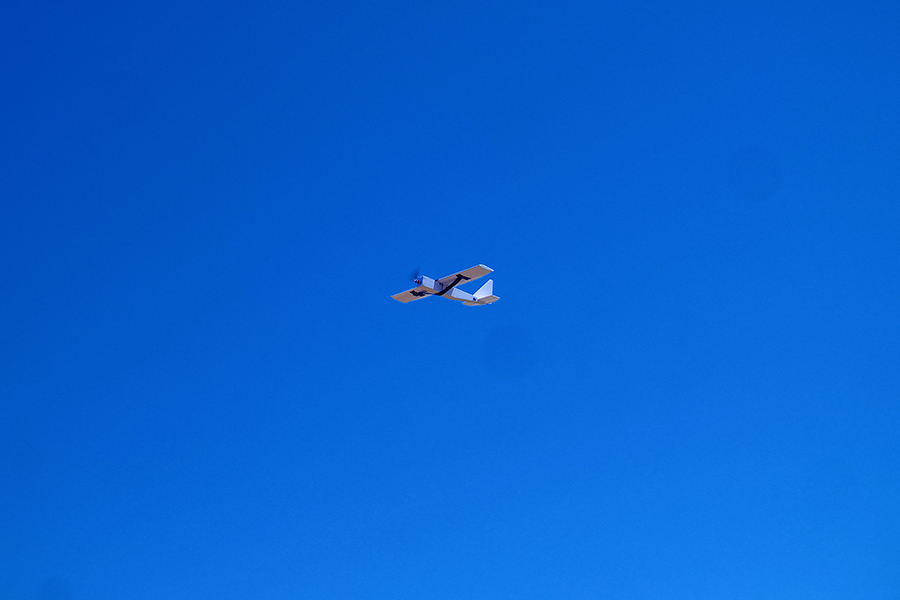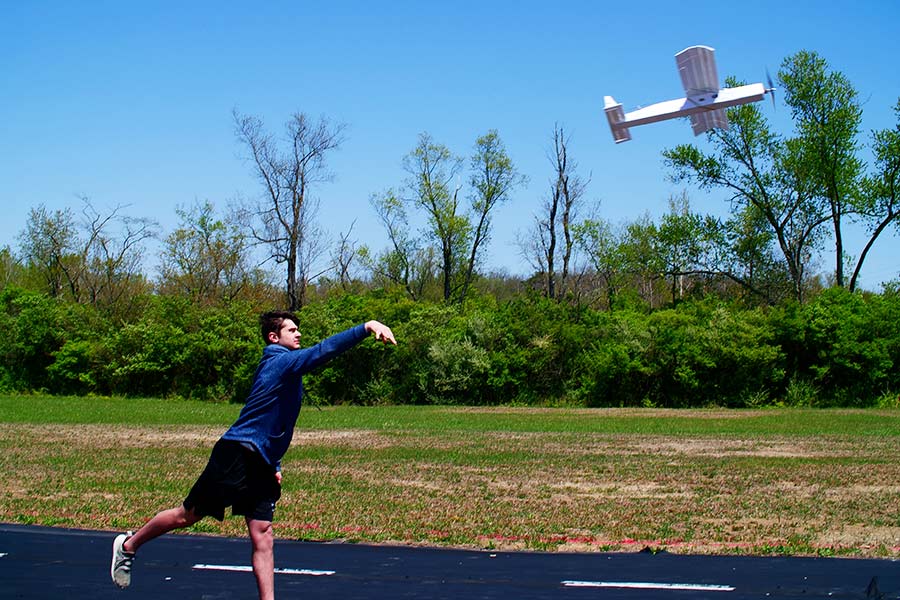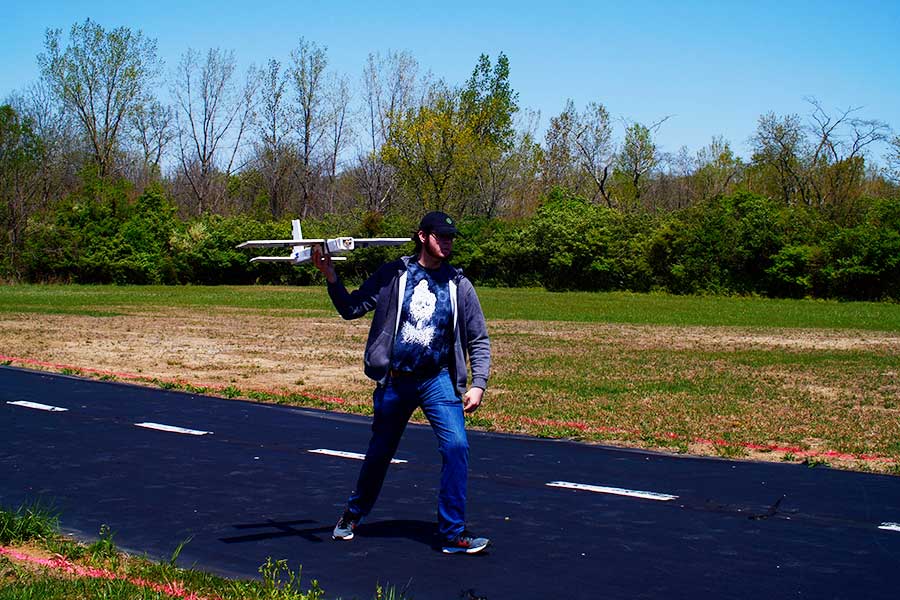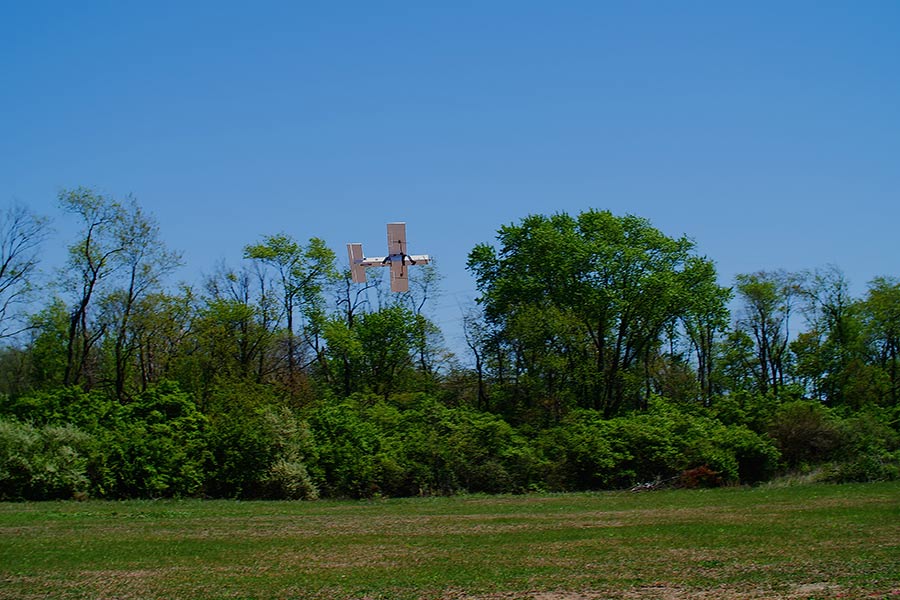Dayton Engineer
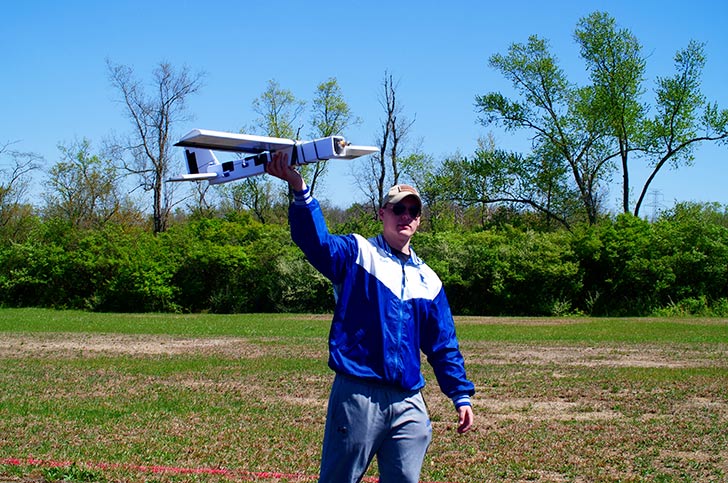
When passion takes flight
By Karen Updyke, School of Engineering
“The field of aerospace engineering was born out of passion,” said Dr. Sid Gunasekaran, assistant professor, University of Dayton Department of Mechanical and Aerospace Engineering. “People have dedicated their lives to redefine what is impossible . . . some people see it as a legacy and a constant reminder of what humans can do if we set our hearts and minds to it.”
This year, Gunasekaran redesigned the School of Engineering Introduction to Flight, MEE 225, course to include a strong, hands-on experiential component. His students designed, built and flew radio-controlled airplanes at the Fairborn Flying Aces R/C Club and were exposed to aeronautical engineering topic areas and fields, such as aerodynamics, aero design, flight dynamics, propulsion and structures. Gunasekaran explained:
The key is to have something tangible that the students take responsibility and ownership of by designing and building something related to the subject. When it came to Intro to Flight, it was a no-brainer that the tangible thing had to be an R/C airplane, which was a major shift from the encyclopedic style of content delivery. As an instructor, I had a lot of fun with this style, which I think is important. If an instructor doesn’t have fun with the subject and show what we can do with the things we learn, it is hard for the students to connect to the subject. That’s why I think the newly designed course offers more than content delivery and knowledge transfer.
I don't know about other technical fields, but 80 percent of the time when students decide to pursue aerospace engineering, it is because they are passionate about airplanes, and they really want to know more about the field. The remaining 20 percent may not have the passion, but they certainly want to see what this field is about and whether or not they want to pursue aero as their career path.
MEE 225 Intro to Flight: Refresh
Before considering their plane design, student teams documented, analyzed and investigated existing R/C aircraft designs (Figure 1) by tabulating the geometric specifications and weight breakdown of each component, the thrust from the engine, the material used to build the airplane, the number of control surfaces, the electronics involved, and the method of actuation, type of engine, location of wing, tail, etc. This activity exposed students to the basics of the R/C airplane and its components.

Based on the data, students analyzed the trends in the geometry of the R/C airplane and went through a 12-step aircraft design process making key design decisions. The R/C design was scaffolded in homework assignments where multiple design iterations were made. When the design was finalized, the aircraft performance was determined by modeling in OpenVSP software (Figure 2).

Figure 2. Student design in OpenVSP software.
Once the performance was determined, using foam board, the aircraft was assembled in the lab (Figures 3 and 4). The construction was done in stages over a course of a month with weekly updates turned in via homework assignments.

Figure 3. Students in University of Dayton Low Speed Wind Tunnel Lab.
Once constructed, aircraft on-board electronics were incorporated along with the servos necessary to actuate the control surfaces. Knowledge of on-board electronics is key in any R/C flight, which students obtained through this course along with the technical content focused on airplanes and flight. Once the electronics were incorporated, the aircraft was balanced to locate the center of gravity, and on the day of flight, our R/C test pilot, Chris Fry, test-flew all designs and gave individual feedback to the students.

Figure 4. Students in University of Dayton Low Speed Wind Tunnel Lab.
MEE 225 student reflections: In their own words
"I have a good amount of experience when it comes to racing quad copters and camera drones but have little to no experience when it comes to R/C airplanes. Having the background for flight will help me in my long-term goals as I go on to hopefully become an Air Force pilot. Having an idea of how airplanes fly may or may not give me an edge in pilot training, but it has definitely reaffirmed my interest in flying." -Kyle
"I have taken aerospace courses prior to this one, and I can honestly say that this one was my favorite. I not only learned the most from this course, but I liked that it discussed the basic aspects of airplanes and aircraft design. I wish I had taken this class before everything, not only would that have made everything else make a lot more sense, but also this course allowed me to see what aerospace is as a whole." -Natalie
“I came into this class with little prior experience in aerodynamics and aircraft design. As the semester progressed, I gradually became accustomed to the tasks and the objectives, and my portfolio grew exponentially. My own proficiencies with respect to aviation design and construction, while still novice, have grown exponentially." -Christian
"Designing and building the R/C plane was a great project. I felt proud seeing my plane fly. I feel that the topics covered in this course were extremely beneficial to my future career in aerospace. I learned many of the most important theories to be used in aircraft design. This was a great learning experience." –Cameron

